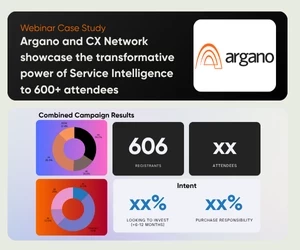How to address customer churn
Addressing customer churn has traditionally been time-consuming, but organisations are now using driver analysis and predictive analytics to combat the issue more effectively.
Add bookmarkCustomer churn is costly and inefficient for any business.
Organisations usually experience churn because they don’t understand their customer’s behaviours or how to adequately address their needs. Therefore, it becomes impossible to meet, let alone exceed, customer expectations when business decision-makers aren’t in tune with their target audience.
Effective Customer Experience (CX) management enables businesses to predict what consumers want, identify important patterns, and find and address issues before they negatively impact the business. Addressing customer churn has traditionally been time-consuming and manually-driven, but organisations are now using driver analysis and predictive analytics to combat customer churn more effectively and efficiently.
Driver analysis is a top-down approach that identifies the leading indicators of customer churn and assesses their relative strength. Used by organisations for high-level strategic planning, driver analysis can help businesses to easily identify the highest priority under-performing areas to focus on and address.
Also see: What every company leader needs to know about CX in 2018
Predictive modelling
Predictive modelling is a bottom-up algorithmic approach that assesses each customer based on their likelihood of leaving. As a result, organisations can proactively identify the customers most at risk of churn and target specific remedial activities to retain that customer.
The most efficient way to perform predictive modelling is through platforms that let business leaders build churn models quickly and inexpensively, without requiring any statistical or programming background or knowledge. Decision-makers also need access to a number of data sources to allow the predictive model to work.
There are three types of data required for predictive modelling:
-
Operational data (O data) is the customer transactional data that sits within an organisations’ business intelligence or finance team, including customer ID, order size, tenure, average order value and history of products ordered.
-
Experience data (X data) is the structured and unstructured customer feedback data collected from a variety of sources including: net promoter scores (NPS), customer satisfaction scores, customer effort scores (CES), websites and likelihood of next purchase.
-
Churn data is all the information that has been collected from customers that have previously churned.
After this information has been collected and passed through a predictive modelling platform, it will assign a ‘likelihood to churn’ score to each customer. Business leaders can also refine the model with additional information to generate the most accurate model possible. Once the model is built, organisations can then feed new customer data into it to determine the churn scores for new customers.
Also see: 5 steps to improve customer service by making it personal
Customer experience
As organisations start assigning predictive scores to customers at an individual level, they can also begin to test for preventative measures. For example, organisations can test what messages or offers are likely to rescue customers that are susceptible to churn, as well as when to say it and how frequently. These tests have very clear indicators of success, namely a reduction in customer turnover.
Effectively addressing customer churn should be a strategic imperative to an organisation’s revenue growth plans. It is considerably cheaper to maintain a customer relationship than to win a new customer. Timely identification of customers that are likely to churn and then implementing remediation plans to retain them are essential. As a result, organisations need to invest in a customer experience management platform that includes predictive modelling capabilities and closed loop action planning. This will enable organisations to garner incredibly rich and actionable insights that will measurably keep more customers coming back.
Qualtrics is a rapidly growing software-as-a-service company and the leader in experience management.
More than 8,500 enterprises worldwide, including more than 75 percent of the Fortune 100 and 99 of the top 100 U.S. business schools, rely on Qualtrics. Our solutions make it easy to measure, prioritize, and optimize the experiences organizations provide across the four foundations of business: customer, product, employee and brand experiences. To learn more, and for a free account, please visit https://www.qualtrics.com/au























